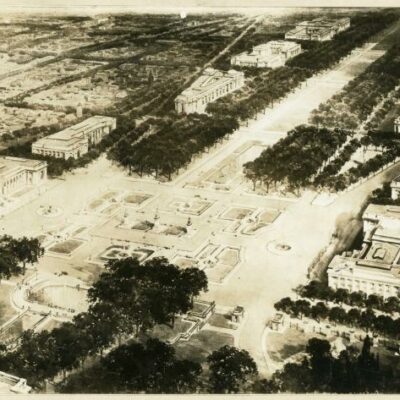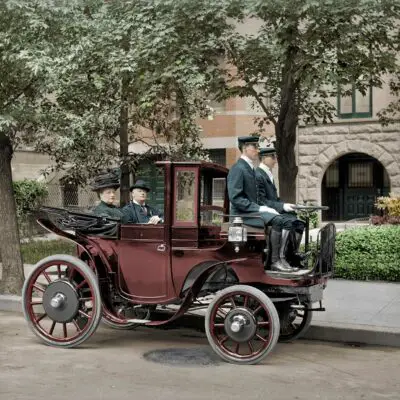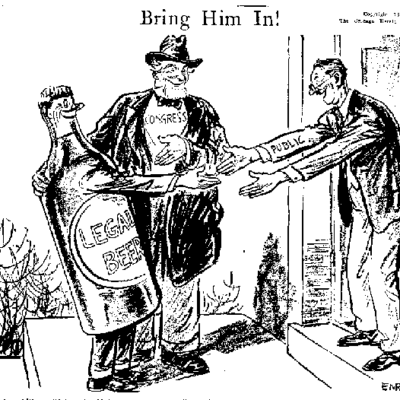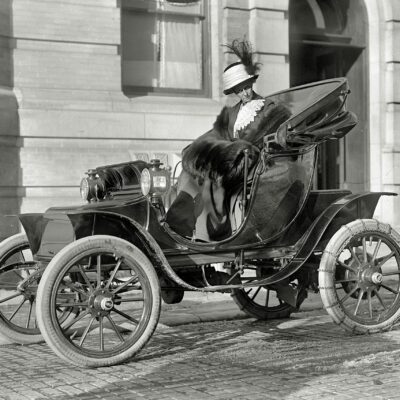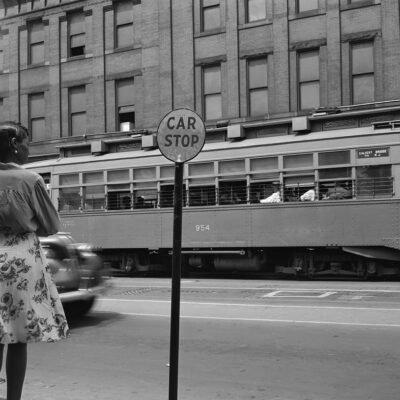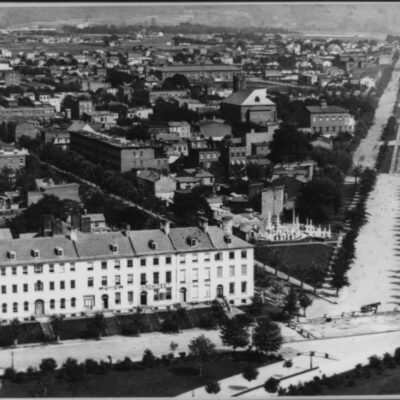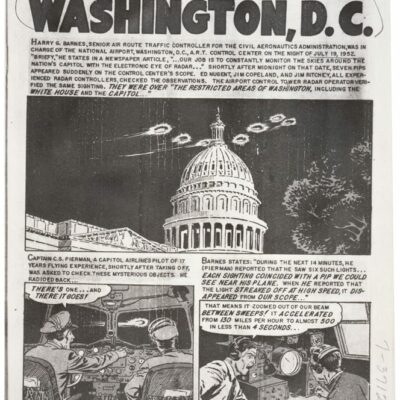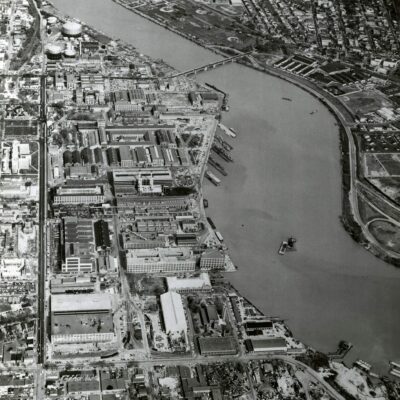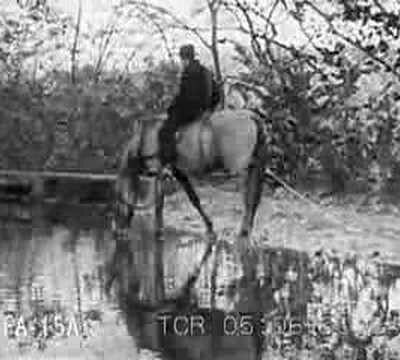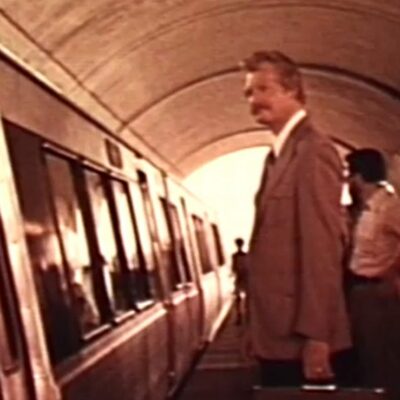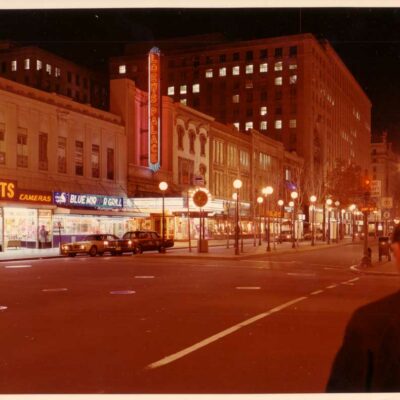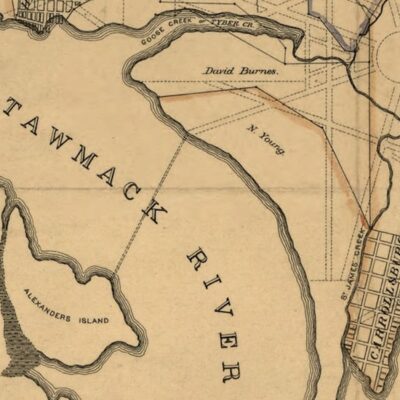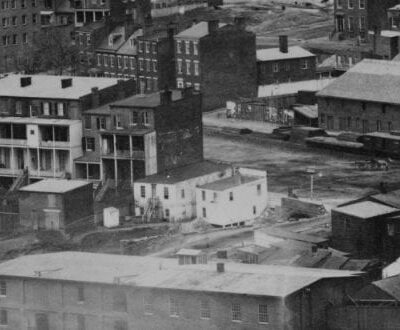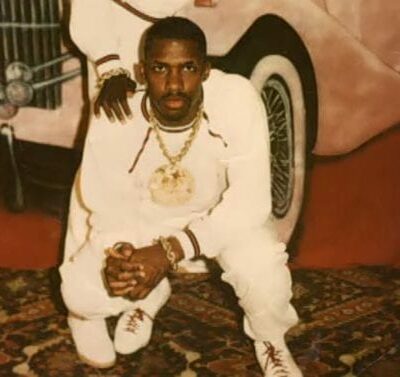I checked my email the other day to find this email from a GoDCer. Emails like this are exactly why I started this blog. Not only is it fascinating, but it’s really important to remember the regular people who lived in our city generations ago. The story below, emailed by Chris, was so compelling that I had to share it with the rest of you.
Ghosts:
Not sure if this will interest you, but…
One block from the beach in Rehoboth, DE is St. Edmonds’ Catholic church. There, on the wall to the right of the altar as you face it is a simple engraved plaque, the only one of its kind in the church. It reads (and I paraphrase): “Private Philip Thomas Hughes, United States Army, 1932-1950, Killed in Korea.”
-ad 197-It turns out that his boy was from Washington DC. Please see the attached story, from the Washington Post, written shortly after his death. In those days, the Post would print complete addresses. So it was that I could find the house where this boy lived. It was a Brookland row house just north of Catholic University. I’ve driven around it– on the street and in the alley behind it– picturing what it must have been like to live there during the 1940s, when he was still a boy.
Thanks to the April 2012 online release of the 1940 U.S. census, we have a snapshot of Philip (age seven) and his family in their house on 10th Street, N.E.: his father Tom, age 55, mother Wilhelmina age 50, brother Francis, age five. Tom was a clerk at the United Mine Worker’s union. A review of the neighboring families shows this to be a working class area: tradesmen, bureaucrats, and the like.
For reasons unknown, I am intrigued by this one kid, one of the many lost in the meat grinder that was the Korean War. Their identities are fading over time. I’m curious about Philip Hughes only because of the coincidence of place: we both lived for a time in DC, and we apparently both had connections to Rehoboth.
With the Internet being what it is, I have been able to scratch together a few additional facts: he was a member of King Company, 19th infantry regiment, 24th infantry division. He was one of the U.S. soldiers on occupation duty in Japan, having arrived there only in April 1950, just weeks before the war broke out. It’s been written elsewhere that the U.S. Army by this time had gotten soft– full of kids like Philip that had no intention of fighting a war.
-ad 199-Philip was among the first U.S. soldiers sent to South Korea in July 1950 in response to its invasion by North Korean troops and armor. The direction they were given was fuzzy at best: this being a “police action,” what was their obligation to fight? Upon initial contact with the enemy, some kids would merely huddle in their foxholes, only to meet their end this way. Philip and his company learned quickly– he survived a couple month’s worth of combat, mostly in retreat as the North Koreans almost forced the Americans and their allies into the sea.
As the article indicates, he picked up a case of dysentery along the way, and was temporarily moved to the rear for some time to recuperate. Unfortunately, Philip’s luck ran out on September 12, 1950, during the last days of the Second Battle of the Naktong Bulge. Philip was just three weeks past his 18th birthday. The circumstances of his death remain a mystery. Was he on patrol in front of the lines? Was he hit in his foxhole by artillery fire? Was he face-to-face with the enemy that killed him? We will never know.
Records provide a description of other 19th infantry soldiers killed in action on the same date: a 35-year old lieutenant from Putnam, NY, a Japanese-American kid from Hawaii, and a boy from Oklahoma. Did they all know each other? Did they die together? September 1950 was the singularly worst month for American casualties in Korea. Philip Thomas Hughes was one of those numbers. The sad irony is that on September 15, General MacArthur pulled off the Inchon invasion, which totally reversed the fortunes of the beleaguered U.S. troops, at least for a time.
Sixty-two years have passed, and it matters little to anyone living today. Philip Hughes’ death certainly left a void in his family. The Internet provides more clues: Social Security death records indicate that Thomas passed away in 1968; Wihelmina in 1969. Their last address of record was in Sussex County, Delaware–in the town of Rehoboth. according to findagrave.com, we find the final resting place of Thomas and Wihelmina Hughes right up the road in Dover, Delaware.
The remains of Philip Hughes, the skinny kid from the Nation’s Capital killed in Korea, were recovered from the battlefield and shipped home for interment in Arlington National Cemetery, section 12, site 2870.
–Chris
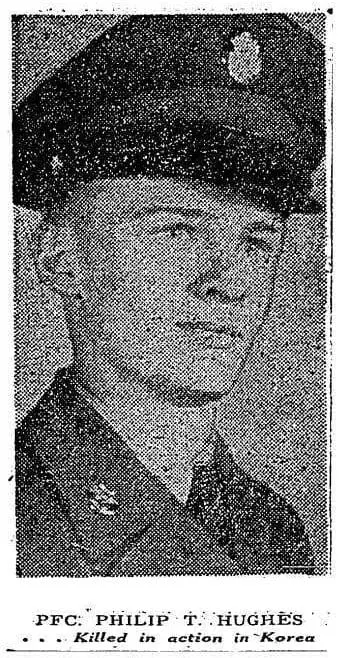
Below is the article from the Washington Post, published on September 26th, 1950.
A Washington GI who wrote his mother to “pray for all the boys who were killed” has been killed in action.
Pfc. Philip T. Hughes, 18, wrote his parents, Mr. and Mrs. Thomas T. Hughes, 4108 10th st. ne., from a rest camp behind the front lines on August 29.
Sunday his family received official notification that he was killed on September 12.
In the letter his parents received September 10, Hughes said the “worst appeared to be over” and it look like “easy sailing” from then on. It was the last word his parents received from him.
Pfc. Hughes said he was in the rest camp suffering from dysentery. He wrote his mother he had lost 20 pounds.
Hughes had been in Korea since July fighting with the Twenty-fourth Infantry Division.
A native of Washington, Hughes attended St. Anthony’s and St. Mary’s parochial schools here. He also attended St. Jerome’s school in Canada before enlisting in the Army. He was sent to Japan after a 20-day furlough home in April.
Mrs. Hughes said her son liked the Army and intended to make it his career. He planned to finish his schooling in the Army, she said.
His father is employed at the United Mine Workers headquarters here. There is another son, Francis, a student at Bell Vocational School.
Hughes is the fifteenth District area man to be killed in Korea. Fifty-six have been wounded, three injured and 19 are currently missing in action.
Casualty list No. 106, released yesterday, listed two Maryland and two Virginia GIs wounded and a Virginia soldier as missing.
This is so painfully sad.



